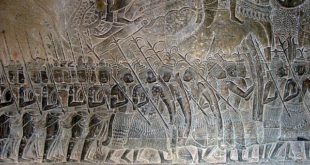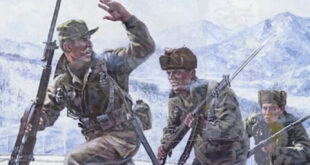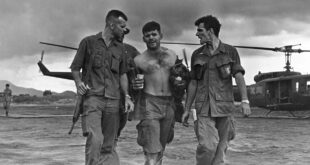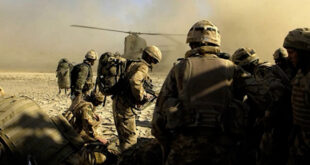When the courage and fortitude of the American soldier triumphed in the face of great adversity.
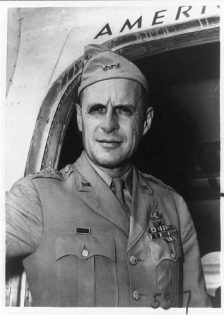
In late 1944, during the wake of the Allied forces’ successful D-Day invasion of Normandy, France, it seemed as if the Second World War was all but over. On Dec. 16, with the onset of winter, the German army launched a counteroffensive that was intended to cut through the Allied forces in a manner that would turn the tide of the war in Hitler’s favor. The battle that ensued is known historically as the Battle of the Bulge. The courage and fortitude of the American Soldier was tested against great adversity. Nevertheless, the quality of his response ultimately meant the victory of freedom over tyranny.
Early on the misty winter morning of Dec. 16, 1944, more than 200,000 German troops and nearly 1,000 tanks launched Adolf Hitler’s last bid to reverse the ebb in his fortunes that had begun when Allied troops landed in France on D-Day. Seeking to drive to the coast of the English Channel and split the Allied armies as they had done in May 1940, the Germans struck in the Ardennes Forest, a 75-mile stretch of the front characterized by dense woods and few roads, held by four inexperienced and battle-worn American divisions stationed there for rest and seasoning.
After a day of hard fighting, the Germans broke through the American front, surrounding most of an infantry division, seizing key crossroads, and advancing their spearheads toward the Meuse River, creating the projection that gave the battle its name.
BATTLE OF THE BULGE DAY 3: DECEMBER 18, 1944 Battling Bastards of Bastogne ~2:15 AM, Major General Matthew Ridgway, unaware of the fighting in Ardennes, and sleeping in his HQ, is awakened by a call from Lieutenant General Courtney Hodges, commander of First Army.
Hodges, calling from the town of Spa in Belgium, tells Ridgway that the Germans are smashing through the Ardennes & the XVIII Airborne Corps had been released from theater reserve and assigned to First Army to help push back the offensive. (From the XVIII Airborne Corps)
Ridgway sends the 101st and 82nd into the teeth of the ferocious German attack. Here’s Jim Gavin, 82nd commander, who would push east to Werbomont, Belgium. The 101st would drive into the wood chipper outside of Bastogne, Belgium.
The 101st, in particular, was in no shape to go back into the fight.
Platoon sergeants walked through the troop barracks, they gave no instructions other than “You ain’t reserve no more, get in the trucks.” They had no additional information to provide.
Several hundred paratroopers from the Screaming Eagles were in field hospitals for treatment of wounds suffered in Operation Market Garden at the time the call came in. These paratroopers could not go back out to the fight.
About a thousand of the men of the 101st who piled into trucks to drive more than 100 miles to get into the fight were “replacement troopers.” These men received only a week of field training in France.
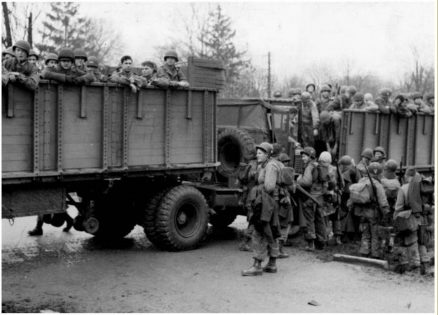
They then were moved over to the 101st to replace the Paratroopers killed in Operation Market Garden. Many of these new paratroopers had no helmets or rifles.
Many of the 101st Paratroopers had never received cold weather equipment. They were about to get tossed into a numbing sub-zero glacial blast without the right gear.
As the men approached Bastogne, they could hear ferocious artillery fire and knew they were going to be in a hell of a fight.
Their commander, Maxwell Taylor, was in DC at a staff conference (hell of a time to go TDY). All the better, the men didn’t like Taylor…he wasn’t a Soldier’s leader and he didn’t live and fight with the boys. The men LOVED the acting commander, Tony McAuliffe.
Upon arrival in Bastogne at the end of the day on December 18th, General McAuliffe placed his headquarters in the Hotel de Commerce. As he watched the men disembark the trucks, McAuliffe knew he was in trouble.
He was an acting commander leading outnumbered ill-equipped replacement troops fighting the best-trained, best-resourced Panzer forces in the Germany Army. McAuliffe knew that if they could win against these odds, the 101st Airborne Division, newly formed for this war, would become legendary.
Stories spread of the massacre of Soldiers and civilians at Malmedy and Stavelot, of paratroopers dropping behind the lines, and of English-speaking German soldiers, disguised as Americans, capturing critical bridges, cutting communications lines, and spreading rumors. For those who had lived through 1940, the picture was all too familiar. Belgian townspeople put away their Allied flags and brought out their swastikas. Police in Paris enforced an all-night curfew. British veterans waited nervously to see how the Americans would react to a full-scale German offensive, and British generals quietly acted to safeguard the Meuse River’s crossings. Even American civilians, who had thought final victory was near were sobered by the Nazi onslaught.
But this was not 1940. The supreme Allied commander, Gen. Dwight D. Eisenhower rushed reinforcements to hold the shoulders of the German penetration. Within days, Lt. Gen. George S. Patton Jr. had turned his Third U.S. Army to the north and was counterattacking against the German flank. But the story of the Battle of the Bulge is above all the story of American Soldiers. Often isolated and unaware of the overall picture, they did their part to slow the Nazi advance, whether by delaying armored spearheads with obstinate defenses of vital crossroads, moving or burning critical gasoline stocks to keep them from the fuel-hungry German tanks, or coming up with questions on arcane Americana to stump possible Nazi infiltrators.

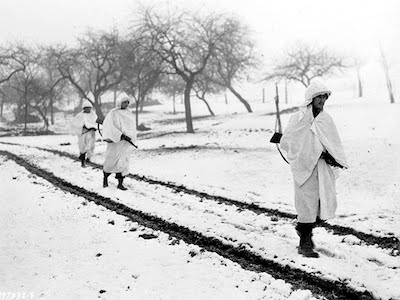
At the critical road junctions of St. Vith and Bastogne, American tankers and paratroopers fought off repeated attacks, and when the acting commander of the 101st Airborne Division in Bastogne was summoned by his German adversary to surrender, he simply responded, “Nuts!”
Within days, Patton’s Third Army had relieved Bastogne, and to the north, the 2nd U.S. Armored Division stopped enemy tanks short of the Meuse River on Christmas. Through January, American troops, often wading through deep snow drifts, attacked the sides of the shrinking bulge until they had restored the front and set the stage for the final drive to victory.
Never again would Hitler be able to launch an offensive in the west on such a scale. An admiring British Prime Minister Sir Winston Churchill stated, “This is undoubtedly the greatest American battle of the war and will, I believe, be regarded as an ever-famous American victory.” Indeed, in terms of participation and losses, the Battle of the Bulge is arguably the greatest battle in American military history.
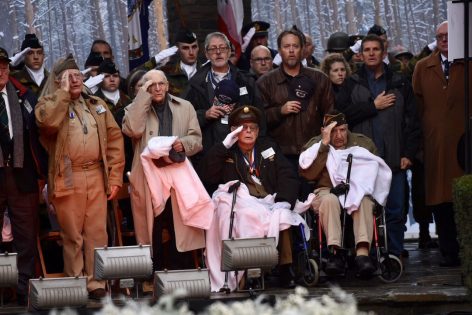
Courtesy of the U.S. Army Center of Military History
 Soldier of Fortune Magazine The Journal of Professional Adventurers
Soldier of Fortune Magazine The Journal of Professional Adventurers


